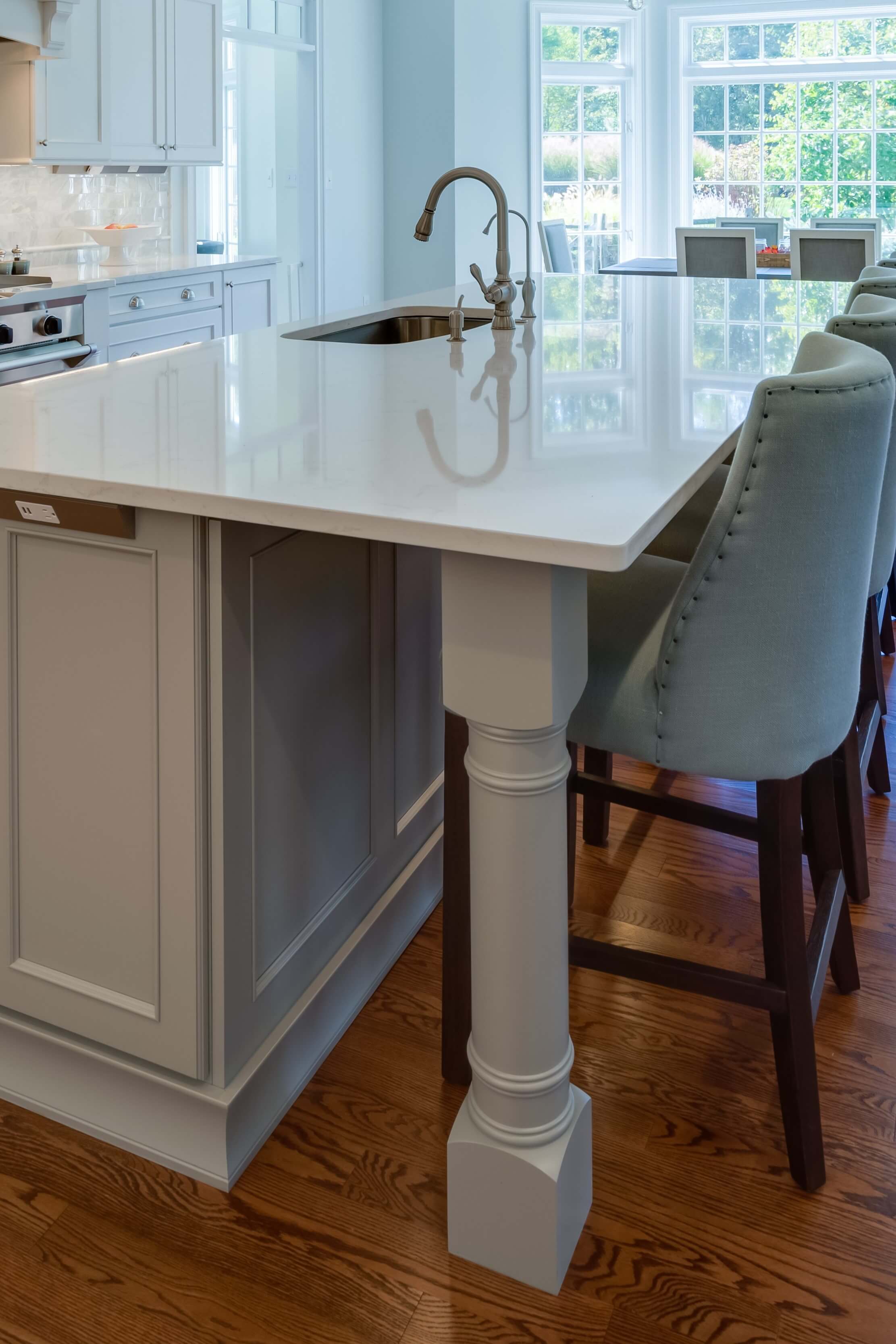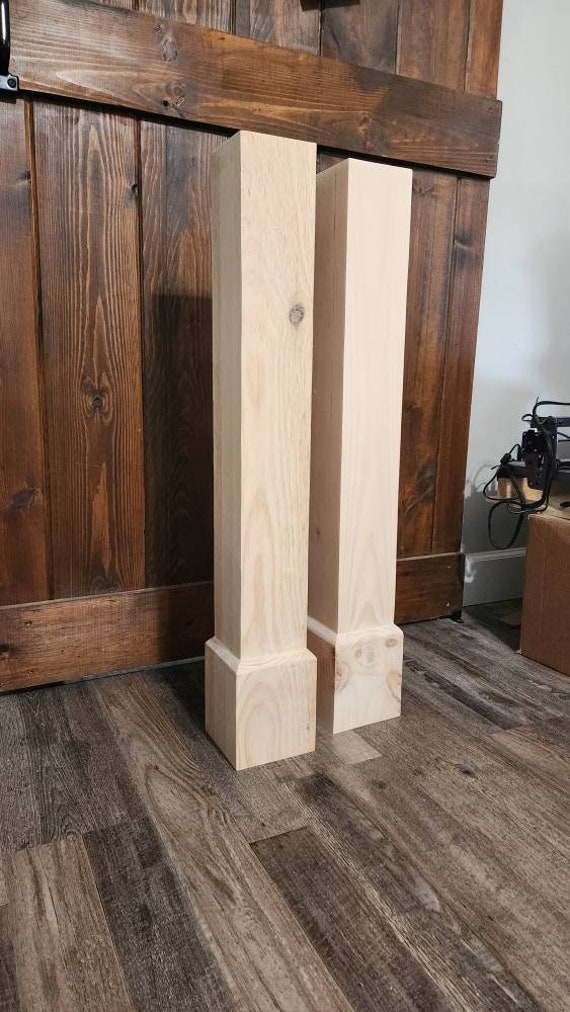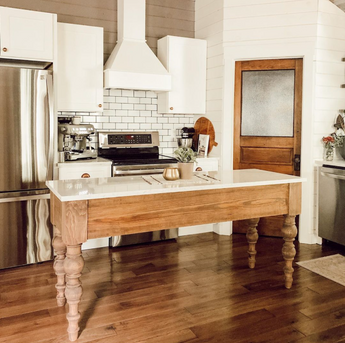Exactly how to Integrate a Kitchen Island Leg into Your Kitchen Remodel
Exactly how to Integrate a Kitchen Island Leg into Your Kitchen Remodel
Blog Article
Top Factors To Consider When Picking a Kitchen Island Leg for Modern Cooking Area Interiors
In the world of modern kitchen insides, the selection of a kitchen island leg is essential, affecting both aesthetic appeals and capability. As these aspects intertwine, they raise even more concerns about how to accomplish the perfect balance between design and practicality, leaving one to ponder the implications of each decision on the overall cooking area experience.
Product Selections
When it comes to selecting a kitchen island leg, material choices play a vital role in both appearances and capability. kitchen island leg. One of the most usual products include wood, steel, and composite options, each offering unique benefits and potential downsides
Wood is favored for its heat and traditional appeal, providing a timeless appearance that enhances different cooking area designs. It is extremely flexible, allowing for personalization in regards to surfaces and shades. Nonetheless, timber might need more upkeep to avoid warping or damage from dampness.
Steel, on the various other hand, brings a contemporary and commercial style to cooking area islands. Stainless steel and wrought iron are prominent selections, known for their resilience and resistance to put on. They can withstand the rigors of daily use yet might do not have the warmth connected with wood.
Composite materials, such as crafted wood or artificial blends, provide an equilibrium between cost, longevity, and looks. These options are commonly designed to simulate the appearance of all-natural materials while giving resistance to scrapes and spills.
Eventually, the choice of product need to straighten with the general kitchen style and meant use, making sure that the kitchen island leg is both functional and visually attractive.
Design and Design
The style and design of a cooking area island leg substantially add to the overall aesthetic of the room, enhancing the chosen product. When choosing the leg design, consider the architectural style of the kitchen. Streamlined, minimalist legs made of stainless steel or acrylic harmonize with modern layouts, while ornate, transformed timber legs enhance traditional or farmhouse visual appeals.
Furthermore, the coating of the leg can affect the aesthetic influence; a sleek chrome or matte black coating might stimulate contemporary sophistication, while troubled timber talks with rustic appeal. The leg's form also plays a vital duty-- directly, angular types convey a more industrial feeling, whereas conical or curved legs present a softer, a lot more inviting appearance.
Integrating decorative aspects, such as carvings or decorations, can include personality and personality to the kitchen area island, more enhancing its function as a focal factor. Eventually, the chosen leg design should not only straighten with the total cooking area design however additionally mirror the house owner's individual taste, making sure that the cooking area island becomes a harmonious and functional focal point within the modern kitchen area inside.
Height and Proportions
Achieving the best elevation and proportions for a cooking area island leg is vital for both capability and aesthetic appeals. Cooking area islands generally vary in elevation from 28 to 36 inches, depending on their intended usage-- whether as a cooking surface area, eating location, or work space. Criterion counter top elevation is around 36 inches, making it crucial that the legs you pick enhance this elevation to provide a seamless, incorporated appearance.
Proportions additionally play a crucial function in the visual equilibrium of the kitchen area. A slender leg might be proper for a contemporary or minimalistic island, while an extra considerable leg might be needed for rustic or standard designs.
When picking the height and percentages of the cooking area island leg, bear in mind the total style theme of your cooking area. This attention to information not only boosts the performance of the space but additionally adds to a visually enticing and cohesive indoor design.
Stability and Support
Consistently making certain stability and assistance in kitchen area island legs is essential for both safety and security and functionality. A sound kitchen island need to withstand day-to-day use, consisting of weight from appliances, food preparations, and celebrations. The selection of legs need to prioritize robust products and layouts that can offer appropriate assistance.
When examining stability, take into consideration the leg's product-- aluminum, hardwood, or steel usually offer remarkable stamina compared to lighter options. Furthermore, the layout should include a wide base to disperse weight evenly and reduce the risk of tipping or wobbling. Legs created with an A-frame or cross-bracing can dramatically boost security.

Incorporating these considerations will certainly not just boost the overall safety of the kitchen room however also improve the longevity and capability of the kitchen island, making it an important focal point in contemporary kitchen insides.
Ending Up Touches
When it comes Learn More to completing a kitchen island, thoughtful completing touches can considerably improve both its aesthetic charm and performance. Choosing the best leg design is critical, yet enhancing it with ideal information can change the entire room. Think about including ornamental elements such as toe kicks or walls that match the cabinets or flooring to create a seamless appearance.

A cohesive shade scheme and material selection will certainly raise the kitchen area island, making it an exciting focal factor. By paying interest to these completing touches, homeowners can develop a kitchen area island that is both gorgeous and functional, catering to their lifestyle and layout preferences.
Conclusion

In the realm of contemporary kitchen area insides, the choice of a kitchen island leg is essential, influencing both looks and functionality.The design and design of a cooking area island leg considerably add to the general visual of the space, matching the chosen material.Achieving the appropriate height and percentages for a kitchen area island leg is vital for both functionality and aesthetics.Constantly making sure security and support in kitchen area island legs is essential for both security and capability.In summary, choosing a cooking area island leg for modern interiors needs careful consideration of product selections, design style, height, proportions, and stability.
Report this page